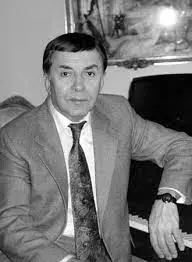DEATH OF KONSTANTIN ORBELIAN
April 24, 2014
 Konstantin Orbelian, a music prodigy, became one of the mainstays of Armenian jazz in the twentieth century.
Konstantin Orbelian, a music prodigy, became one of the mainstays of Armenian jazz in the twentieth century.
He was born on July 29, 1928, in the town of Armavir (North Caucasus). His musical talents became clear at an early age. He was sent to a school for gifted children at the Baku Conservatory, but he studied there for a short time. His father was arrested and shot during the Stalin purges in 1936. Two years later, his mother was arrested and sentenced to five years of exile. Their children Haroutioun and Konstantin became “children of people’s enemies” overnight.
Eleven-year-old Konstantin Orbelian was immediately expelled from the musical school and had to earn some living as a musical accompanist to gymnasts. In 1942, he was taken into the jazz orchestra of aviation school #8 as a pianist and accordionist. During the band’s tour to Yerevan, Armenian jazz musicians “discovered” the young improviser. Composer Artemi Ayvazian invited him into his orchestra. The Armenian State Pop Orchestra was considered one of the best Soviet ensembles of the time, characterized by high professionalism, spectacular performances, and a focus on traditional Armenian music.
Konstantin Orbelian, who started arranging Armenian folk songs for the orchestra and composing his own songs in 1945, became known as one of the best jazz musicians not only in Armenia, but also abroad. In 1952, he left the orchestra and enrolled in composer Edward Mirzoyan’s class at the Romanos Melikian Musical College. Combining study with work, he started working at the Yerevan Opera and Ballet Theater as a concertmaster. He graduated from Melikian College with honors in 1954 and entered the State Conservatory.
In 1956, Orbelian, who had already written music for ballet and movies, finished the String Quartet he had started in college. The composition caught the attention of the musicians of the Komitas Quartet, who had a reputation for being the most demanding. In the same year, it won the Grand Prix at the 6th International Festival of Youth and Students in Moscow.
Most importantly, in the same year Konstantin Orbelian became a member of the Soviet Composers Union and was appointed conductor and art director of the Armenian State Pop Orchestra. He would hold the position for the next 36 years. He composed new pieces for the orchestra, like “Dilijan” and the “Concert Jazz-March”, which became a sort of a visit card for the band, being played at the beginning and the end of their performances. Orbelian also made a jazzy interpretation of Aram Khachaturian’s song “Karoon Yerevan” and fully transposed to jazz his world-famous “Saber Dance.”
He took a leave from 1960 to1961 to write a symphony as his diploma work for the State Conservatory, which was received with great success in the Soviet Union and abroad. He would later compose other symphonic works and the “Immortality” ballet. Graduating in 1961, Orbelian returned to his work with the orchestra. Armenian jazz started appearing on the international scene. The orchestra had its first concerts abroad in Czechoslovakia and Poland in 1966-1967. In 1975 the Armenian State Pop Orchestra was the first Soviet jazz ensemble to visit the United States, giving 25 concerts in Washington, D.C., Los Angeles, San Francisco, Boston, Detroit, Chicago, and Providence. The final concert was held in New York’s Lincoln Center. The orchestra earned the praise of American musical critics. It was invited to a concert tour in France in 1976. The orchestra visited many countries in the Near and Far East (India, Sri Lanka, Afghanistan, Iraq, Kuwait, Syria, Lebanon), as well as Africa (Egypt, Kenya, Ethiopia). It toured the former Socialist countries and participated in festivals time and again.
In addition to concerts and touring activities, Orbelian was a prolific jazz composer, too. He experimented heavily with various jazz styles, including then new jazz-rock. He was awarded the title of People’s Artist of the USSR in 1979. Over the years, he was also decorated with Soviet, Bulgarian, and Armenian medals.
In 1992, he moved from Yerevan to San Francisco, and then to Los Angeles, where he passed away on April 24, 2014. He was buried in Yerevan.
